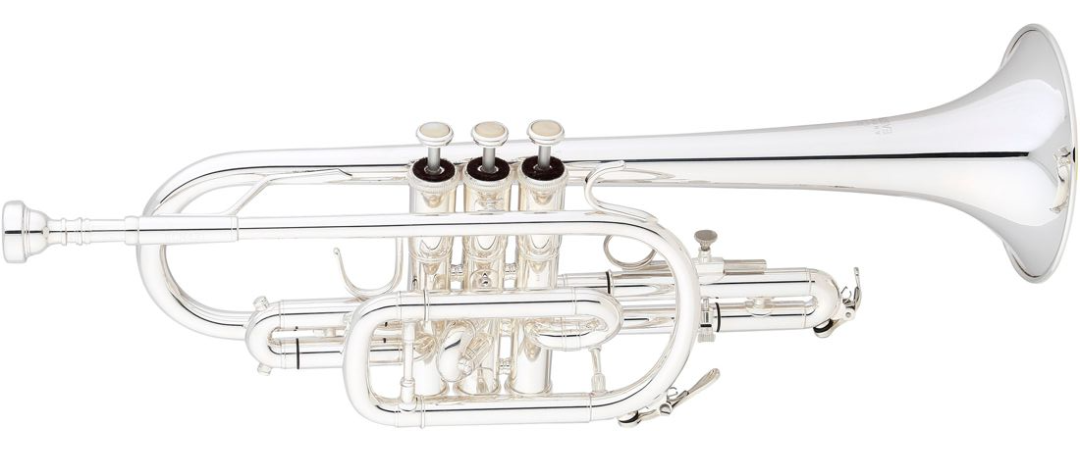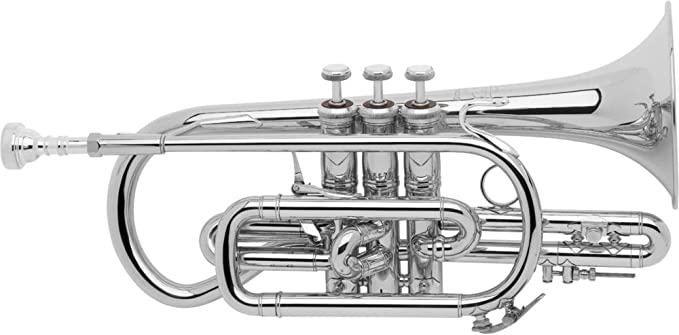- Best Reputable Flute Brands - July 11, 2021
When it comes to having a new hobby or wanting to be in a band, plenty of people loves learning to play a new instrument. There are instruments that are harder to play than others. With patience and practice, you’ll be playing like a pro in no time! If you’re looking at how to play the cornet, you have come to the right place. Let’s get started!
What is a cornet?
The cornet is a brass wind treble instrument with a cupped mouthpiece and a five-foot-long main tube. It resembles a trumpet but lacks some of the trumpet’s characteristics. This contemporary instrument features three valves on the main tube, a range of around two and a half octaves, and the tone is created by the player’s lips vibrating.
The ability to generate a pleasing sound from the cornet is the major concern for every cornet musician. A strained, pinched, harsh, or otherwise unattractive tone emanating from a cornet, in my view, is not very enjoyable. The sound of the cornet is really natural and wonderful. However, there are moments in music when cornetists are required to produce an unusual sound in order to provide depth to the overall sound.
History of the cornet
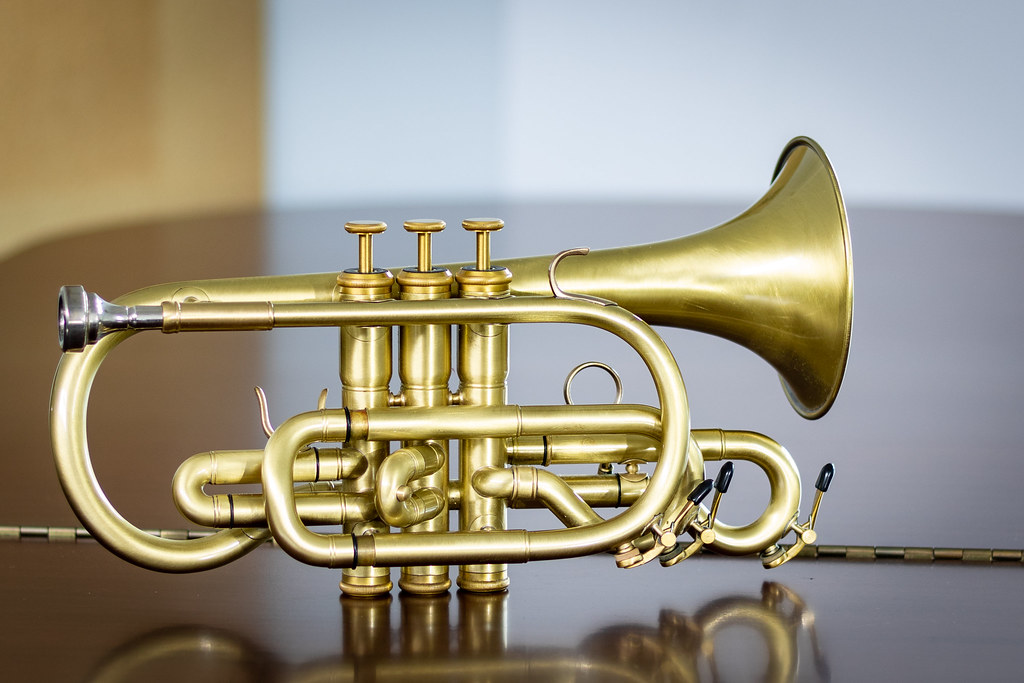
The cornet, a valved variant of the post horn, was designed in France in the 1820s. The instrument was an instant hit with audiences, quickly displacing keyed bugles as a favorite. This instrument features two valves named after the German Heinrich David Stölzel (1777 – 1844), who created them in 1814.
Brass instruments with valves from before 1840 are exceedingly uncommon, and this 1833 specimen is one of the oldest surviving specimens. It originally had two valves that reduced the pitch of the instrument by a whole step and a half step, respectively.
The cornet grew in popularity as a solo instrument. Many of the first virtuosos were horn players who used different detachable sections of tubing for different tonalities or moods, with the longer crooks stretching the fundamental pitch down to E flat and producing a deeper tone.
The cornet’s qualities, as well as those of the valved bugle, were used to create a variety of different instruments. The althorn and baritone are two of them. Both of these instruments’ names are also used for other brass instruments with similar ranges that are utilized differently in other countries.
Jean-Baptiste Arban, the first prominent virtuoso performer, researched the cornet intensively and wrote ‘La grande méthode complète de cornet à piston et de saxhorn’, now known as the Arban technique, in 1864. The trumpet and cornet coexisted in musical groups until the early twentieth century.
Starting with the basics
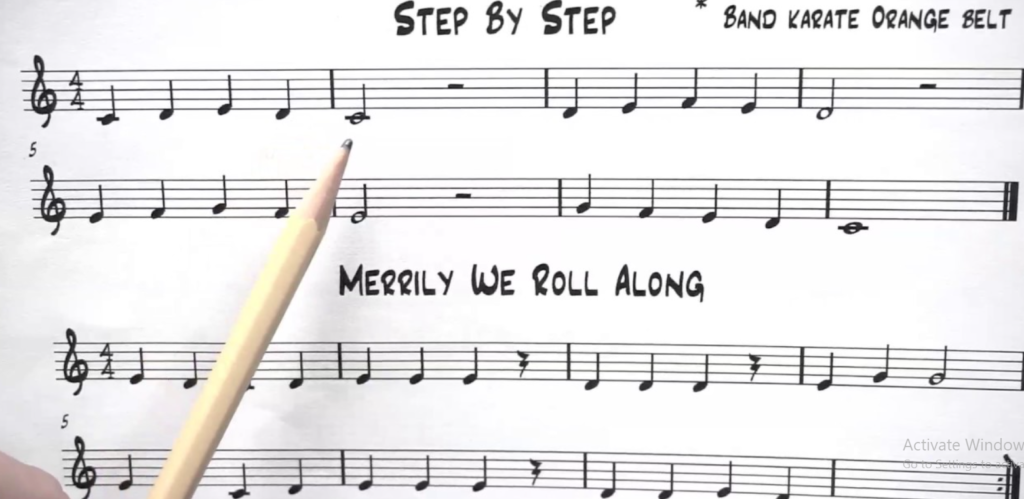
Learning the cornet isn’t easy, but with a few simple steps in the right direction, we can get you started. You always want to start out learning the basics, the right formation of your lips, the five base notes, and articulation.
Formation of your lips
Carefully remove the mouthpiece off of your cornet, place it up to your lips. Make sure your top lip is covering half of the entry and your bottom lip is covering the other half. “Buzz” your lips on the mouthpiece. It should have the same sound as a swarm of bees. It’s possible you won’t get it on the first try, but if you don’t, keep trying until you do.
Now, let’s practice with the mouthpiece on your cornet. Don’t worry about pushing down any of the valves yet until you have your sound. You’re going to do the same thing you just did. Upper lip half on, bottom lip half on, buzz your lips. This will most likely take a few tries to get a complete and solid sound through your cornet. But don’t give up!
To hold the cornet correctly, place your right index finger on the first valve, then your middle on the second valve, ring finger on the third valve, your thumb and pinky will go around the valve casing. Your left will also grasp the valve casing, and your pinky will go in the third valve slide ring.
Learning the five basic notes
If you are comfortable enough with getting a solid sound through your cornet, then let’s move on to getting you used to the finger placements on the valves.
To produce higher notes on the scale, you will need to create faster air; the way to do this is by tightening your lips. To produce lower notes on the scale, you will need to create slower air; the way to do this is by loosening your lips. If you want to try it out, put your hand in front of your face and do these two maneuvers.
Finger placements:
C- all valves are open
D- valves one and three closed, tighten lips faintly
E- valves one and two closed, tighten lips a little more
F- valve one closed, tighten lips slightly more
G- all valves are open, tighten lips moderately
One tip is to make sure you are tuned properly. The way to tune your cornet is to use the tuning slide and a tuner to make sure your pitch is correct. You can download a free tuner app on your phone if you don’t have a tuner in your home.
Articulation
The simple version of articulation is to tap your tongue on the rough of your mouth. To practice this, start by holding a long note (I would suggest holding a C note), then slowly start tapping your tongue. Take breaths when you need to. If you are comfortable articulating slowly, then bring up the speed of tapping until you are comfortable. Do this repeatedly until you’re confident you have a handle on articulation.
Tips for learning the cornet
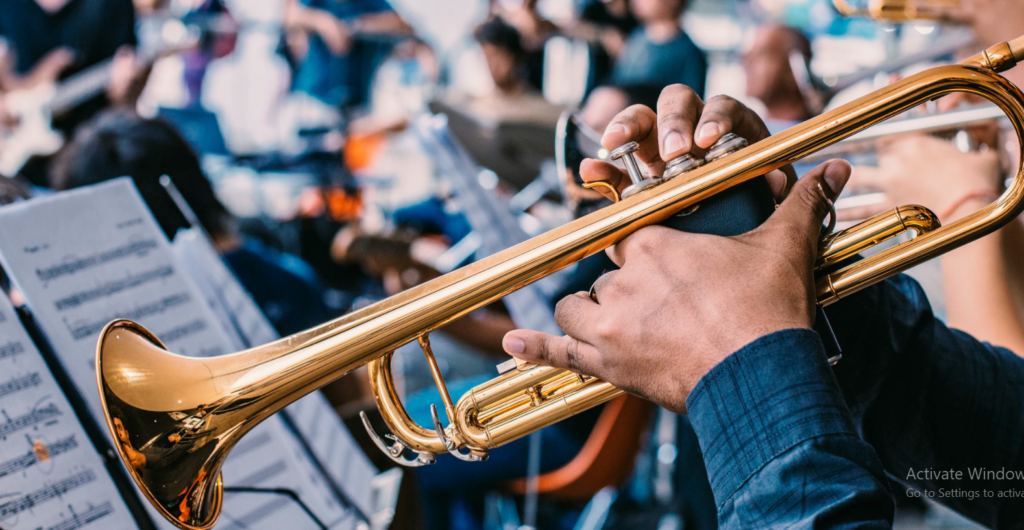
This section is not designed to tell newcomers what is completely correct or incorrect, but rather to highlight a few issues for you to ponder. Everyone should look for the ideal way to learn how to play the instrument, ideally with the help of an instructor.
Embouchure
Because everyone’s teeth and lips are different, a variety of embouchures have evolved. There is no correct or incorrect answer; you must choose the path that seems right to you. However, there are certain broad guidelines that apply to the majority of them.
To prevent air from leaking out of your mouth, keep the corners of your mouth tight. When climbing up, it’s usually best to press the lips a little further to the center rather than stretching them. Stretching thins the lip tissue, exposing it to harm and reducing the volume of the sound.
Breathing
Always take a big, deep breath before playing. Inhale without lifting your shoulders; instead of tensing yourself, strive to relax. Avoid raising your shoulders by visualizing the air getting very deep and low. Do not hold your breath; instead, inhale slowly and blow out quickly.
Dry vs wet lips
Both of these options are appropriate. Dry lips will adhere to the mouthpiece, preventing it from slipping. Wet lips, on the other hand, slip under the mouthpiece yet are able to alter to current dynamics and pitch. Simply try both and see which one feels best to you.
Posture
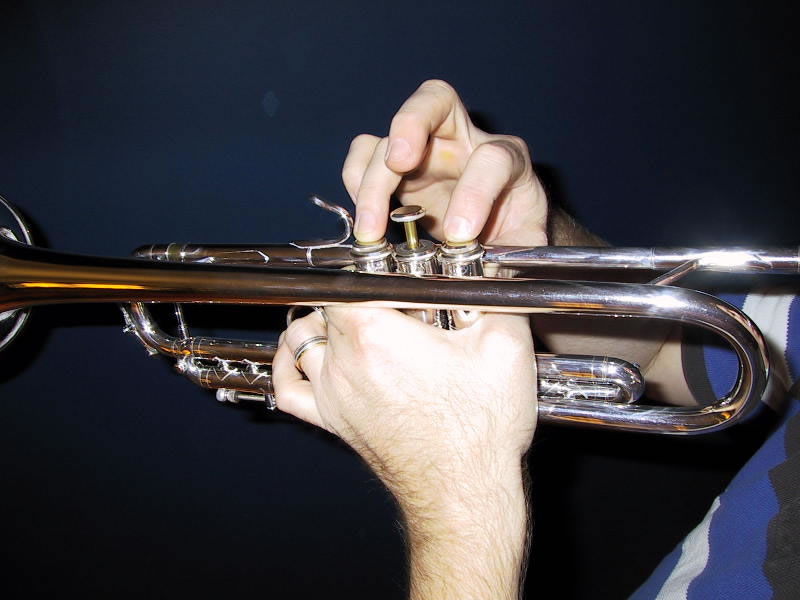
Don’t point the bell to the ground; a modest downward pointing of the cornet is natural, but not excessive. Don’t slouch; instead, keep your knees loose and relaxed. Maintain a slight distance between your arms and your torso. It will assist you with your posture and respiratory problems if you are in good physical shape.
Valves
It’s best to use the “cushions” of your fingers to press the valve straight down. It’s conceivable that if you press them diagonally enough times, they’ll ultimately jam. Your nails and finger joints should not come into contact with the finger button. To get the note changes as clear as possible, slam the valves down quickly.
Practicing
It is preferable to practice a bit each day rather than a lot once or twice a week. When your chops become fatigued, remember to take a break. Rest as much as you play, as a general rule. While some mouthpiece pressure is required for optimal tone and to prevent air from seeping behind the mouthpiece, excessive pressure should be avoided,
Tips to finding the right cornet
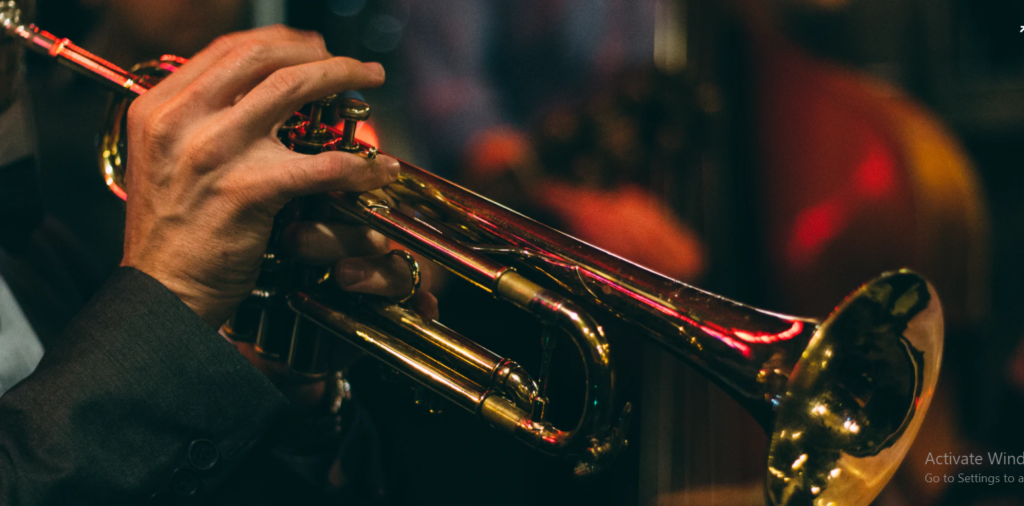
Even though cornets are an easy instrument to learn, you want to be sure you’re getting the most bang for your buck. Here are a few pointers to help you get the most of your new cornet.
A high-quality finish
When you are looking for a cornet, you want a high-quality finish to ensure the best quality. This finish will also hold up for wear and tear, so you won’t have a high risk of scratches and dents.
How comfortable it is
You want your cornet to be comfortable in your hands and on your lips while you play. Most cornets are meant to be worn with a hat and glasses, so if you’re looking for something other than that, you may want to look at something moderately priced.
Prices
A simple cornet can cost anywhere from fifty to two hundred dollars, depending on the size. Cornets in the mid-range vary from one hundred to three hundred dollars, while luxury ones may cost several thousand dollars.
Accessories
Cornet accessories, such as cleaning materials, cases, and stands, are also available.
Cleaning materials
Cleaning equipment and accessories are substantially more expensive than simple cornets. The more expensive versions usually come with a longer guarantee and a variety of cleaning accessories.
Cases
The majority of cornet case sets range in price from twenty to sixty dollars. The most popular cases have appealing patterns and are made of solid wood.
Stands
Many cornet stands are also built for exhibition purposes and can cost anything from fifteen to one hundred and fifty dollars.
Sound quality
Cornets are mostly constructed of wood, while some types are built of composite materials such as maple or spruce. Each type of wood has advantages and disadvantages, which is why, before purchasing a new instrument, you should consider how these various materials will affect your performance.
Cornet Recommendations
Learning how to play the Cornet takes time, patience, passion, and practice. It requires that you have a good instrument. From student to professional, it’s essential that the horn is comfortable to play and plays the way you want. I chose these cornet recommendations based on the brand, features, tone, and longevity.
Yamaha YCR- 2330III Cornet
Yamaha loves making a good student instrument; that is their call to fame. The Yamaha YCR-2330III is one of those well-priced and well-built student models Yamaha is known for. This cornet features a Shepherds Crook bell, a rounded leadpipe, and a medium-large bore.
This horn has a warmer tone, which is what Yamaha was shooting for when they designed it. The adjustable third valve trigger allows different-sized hands to hold the cornet easily. The valves are monel alloy pistons that are very smooth and effortlessly playable.
Pros
- Shepherds crook bend bell for flair
- Adjustable third valve trigger to accommodate hand sizes
- A warm, soft tone
- Comes with a 11E4 mouthpiece
- Perfect for beginners
- Available in yellow gold lacquer and silver
Cons
- Condensation builds up quickly
- Is not meant for professional use
Eastman ECN421/422 Series Bb Cornet
Eastman is well known for their guitars and violins. They also make high-quality brass and woodwind instruments. Their lines are highly focused on quality student instruments that will last a number of years. The ECN421/422 is a classic student cornet available in either .459 or .460” bore sizes.
It is a handspun cornet with a wire-reinforced yellow brass bell. I find this cornet to be easy for young students to use while still providing good intonation and response. Between the Yamaha YCR and the Eastman 421/422, you have two great choices for a serious beginner student.
Pros
- Perfect Cornet for a beginner
- Comes with a mouthpiece and a case
- Hand lapped valves and graduated brass thickness give this horn a more professional tone
- Durable horn that should last a student a number of years
Cons
- Lack of overall promotion and reviews make it hard to pre-judge this cornet before trying it out.
Yamaha YCR-6330S Professional Bb Cornet
While Yamaha can make a great student horn, they also know their way around a professional horn. The YCR-6330S is similar to the YCR-2330III with a Shepherd’s Crook bell. Except this bell is shorter, giving it a brighter and brilliant tone. This particular model is in silver, but it’s also available in gold brass.
I can certainly attest that it’s brighter than the 2330III. The valves are monel, and both the slides and pistons are hand-lapped for a perfect seal allowing smooth airflow. The bell itself is but together using laser technology for better vibrations.
Pros
- Lightweight construction with smooth airflow
- Perfectly rounded tubing using pressure-formed tubing
- Gold brass mouthpiece
- Comes with a case and CR11E4 mouthpiece
- A great intermediate horn
Cons
- Quieter compared to other horns
Adams CN1 Selected Series Professional Bb
Adams is well known for making top-of-the-line professional horns, and the CN1 is nothing to sneeze at. This horn features short action valves that provide very direct articulation, along with its blendable tone.
Unlike other horns on this list, the bell is one-piece hand-hammered for excellent projection and expert craftsmanship. This cornet is also available in a silver-plated version that adds more brilliance to the overall tone. Overall if you are in the market for a professional cornet, this is one to check out.
Pros
- Responisve in all reigsters
- Round warm tone
- Comes with a case
- Trigger on the first and third valve
- Available in yellow gold and silver
Cons
- Doesn’t come with a mouthpiece
Bach 184SL Stradivarius Series Bb Cornet
Bach instruments are high-end and expensive, but you can customize different aspects of the horn to get precisely what you want. The 184SL has the same loved the delicate tone of all Bach horns but customizing it allows you to choose a lightweight bell or a thicker bell depending on the tone you want.
Of course, it’s available in both gold and silver finishes; you can choose lacquer or plating for gold, along with slide triggers and special engravings. For a professional, this is an investment of a lifetime. You might as well get the horn of your dreams!
Pros
- Highly customizable
- Delicate tone Bach is known
- 2 windings allow for a more resistant and flexible sound
- Great for technical performances
- Amazing investment for a full-time cornet player
Cons
- Expensive
FAQs
Answer: Overall, cornets are more difficult to master, especially if you start late. But that’s not to suggest that years of practice and steady awareness can’t turn you into a real master. It is critical to warm up and practice on a regular basis while taking periodic breaks.
Answer: Overall, both have their own strengths and weaknesses. The trumpet is easier to learn when it comes to producing a loud and strong sound, but it is hard to learn how to keep a consistent sound. Cornet is easier to learn when it comes to the notes and keeping a steady sound, but it takes some very powerful lungs to produce a loud and sturdy sound.
Answer: A cornet can play up to 39 different notes. A lot of the fingerings are the same, but it all matters in the structure of your lips to reach those low notes and the high notes. It takes a lot of practice to be able to play the 39 note scale without messing up, so don’t be too hard on yourself!
How to Play the Cornet: Final Thoughts
As I’m sure you’ve learned, the cornet is not a very easy instrument to learn. It takes patience and time to learn. The looser your lips are, the lower the note you will play; the tighter your lips are, the higher the note you will play.
When you are looking for the perfect cornet for you, remember to look for a high-quality finish, so it is less fragile. Also, look for the right sound quality to make you sound even better when playing. Remember to find what makes you most comfortable when playing the cornet. Keeping your posture is a critical step to being able to play the cornet correctly. What do you think?
For more interesting readings check out:


